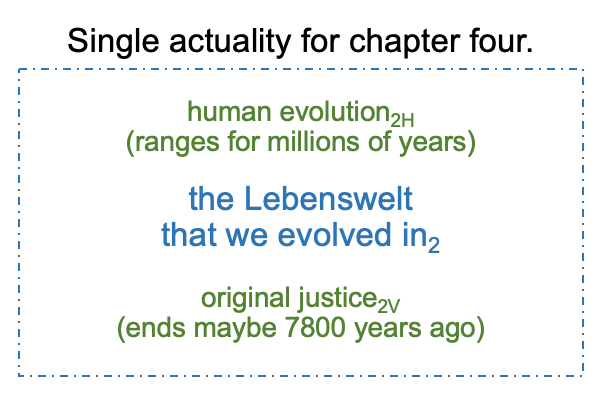0038 I summarize.
Chapter four covers human evolution.
Haarsma engages in a discussion of human evolution2H as if it does not intersect with original sin2V. Yet it does, otherwise Haarsma would not write a book about it.
Haarsma’s titular question2V, “When did sin begin?”, should place the hypothesis of the first singularity2H side by side with the doctrine of original sin2V.
But, since Haarsma is not aware of the hypothesis of the first singularity, the term, “human evolution”, goes into the slot for actuality2H for the normal context of natural change3H.
This does not work, of course, and leads to a winding path, back to the crucial intersection between the first singularity2Vand original sin2H.
0039 The path starts by asking, “What contributing actuality2V, in a theological framework3V, corresponds to human evolution, as Haarsma discusses the topic?”
The answer comes from Thomas Aquinas’s suggestion that original sin is the lack of original justice. Original justice is entangled with human evolution.

0040 If human evolution2H is one of the actualities in an intersection, the corresponding actuality is not original sin2H. The corresponding actuality is really the stuff of the Creation Story2V.
The structure of Haarsma’s text validates this suggestion.
Chapter four, titled, “Human Evolution”, is preceded by chapter three, “Suffering and Death Before Humans”, and followed by chapter five, “The Soul, the Imago Dei and Special Divine Action”. Chapters three and five point to Genesis 1:26-31.
